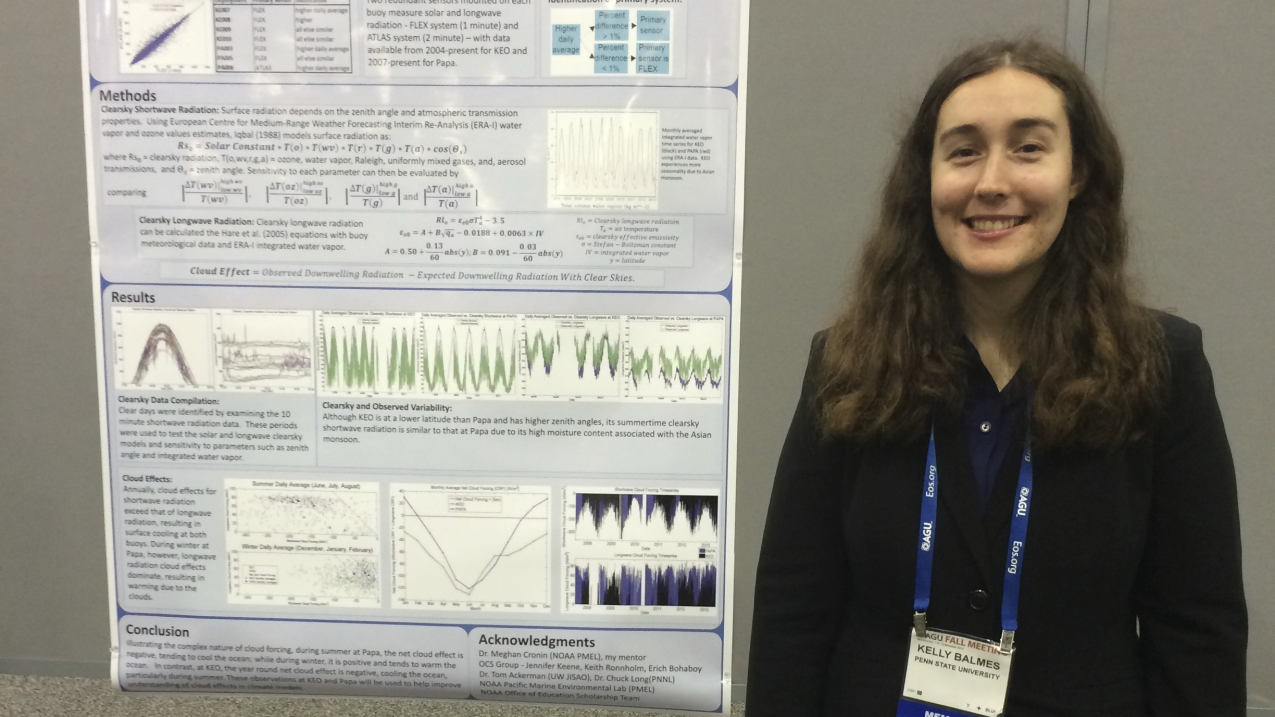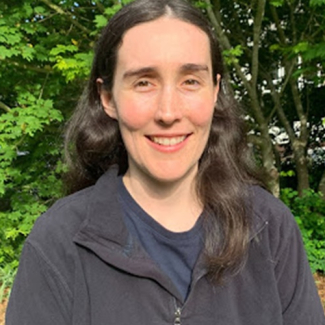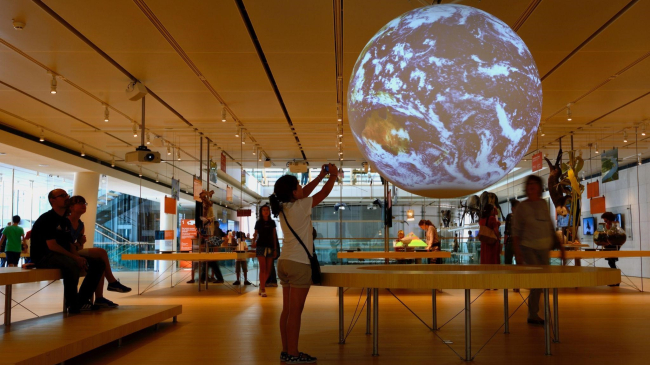Kelly Balmes is a 2013 Hollings Undergraduate Scholarship alumna who is now a research scientist in NOAA Research’s Global Monitoring Laboratory at the University of Colorado at Boulder Cooperative Institute for Research in Environmental Sciences (CIRES/NOAA GML) offsite link. As a scholar, her internship focused on evaluating how clouds affect radiation. What she learned during her internship still applies to her work today — one of her current projects investigates how solar energy varies due to different cloud types to inform solar energy forecasting. Another project informs how interactions between clouds and radiation can be represented in weather prediction models. Below, Kelly answers a few questions about her Hollings Scholarship experience and her career path.

Kelly Balmes, a class of 2013 Hollings alumna, presented on her internship research at the American Geophysical Union fall meeting in 2014. Now, she works as a research scientist at NOAA Research's
Global Monitoring Laboratory. (Image credit: Courtesy of Kelly Balmes)
1. In your interview with NOAA Research for Women’s History Month, you mentioned that the Hollings scholarship set you up for success. Can you elaborate on that?
The Hollings program helped set me up for success because it helped me gain relevant experience as well as provide me with the knowledge of how to apply to grad school. The Hollings program also provided financial support for me to travel to a conference and present my project. This opportunity allowed me to reach out and meet with prospective grad school advisors at the conference. In addition, I learned more about what NOAA does not only through the presentations of NOAA’s work at Hollings orientation but also through my experience of spending a summer at a NOAA lab.
2. How does your Hollings experience connect with your current position at NOAA as a CIRES research scientist?
As mentioned above, Hollings helped with applying to and ultimately being admitted to grad school. My internship was also primarily using radiation observations, which is what I broadly still do today. Once in grad school, I built upon the research skills developed during my internship under similar research topics. Ultimately, I graduated with my Ph.D., which helped me land a postdoc at CIRES/NOAA GML.
3. You were interested in meteorology from a young age — did the Hollings scholarship help provide a more concrete vision of what a career in meteorology could look like?
Yes, Hollings helped to provide a more concrete idea of what I wanted to do with a career in meteorology. Through my internship, I saw more of the research side of meteorology instead of just the forecast and broadcast side that many people think of as a meteorologist. In addition, the experience helped me understand what steps I needed to take to have a career in NOAA research.
4. Reflecting back on your time as a Hollings scholar, do you have a favorite memory from your internship?
My favorite memory of my internship was presenting my internship project at the American Geophysical Union offsite link meeting. It felt like the culmination of my experience while also a professional development milestone in my career.
5. Do you have any advice for new classes of Hollings scholars?
My advice is to take advantage of the funding to attend and present at a conference. It is a rewarding and fun experience that could help you with whatever it is that comes next in your career.
Celebrating Women's History Month 2023 with Kelly Balmes
Read more about Kelly Balmes work, career path, and thoughts on climate resilience in NOAA Research's 2023 feature.




